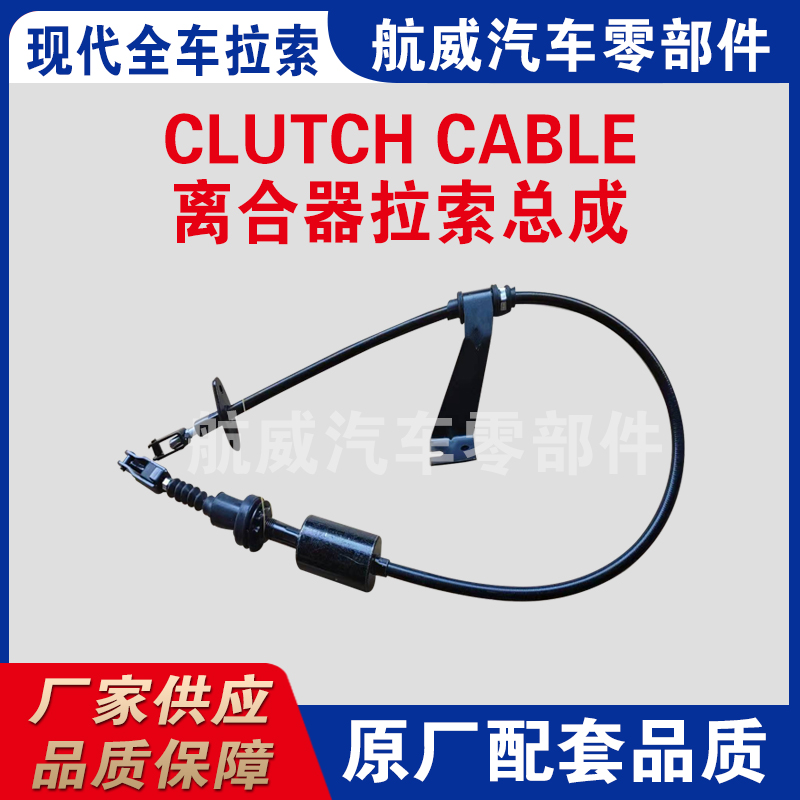rear derailleur cable
Understanding Rear Derailleur Cables Importance, Function, and Maintenance
Cycling is an activity that combines the thrill of adventure with the efficiency of transportation. One crucial element that greatly enhances the functionality of a bicycle is the rear derailleur, which plays a pivotal role in shifting gears smoothly. At the heart of this mechanism lies the rear derailleur cable, often overlooked but integral to a cyclist’s experience. Understanding this component can lead to better bike maintenance and an enhanced riding experience.
What is a Rear Derailleur Cable?
The rear derailleur cable is a thin wire that connects the shifter on the handlebars to the rear derailleur located at the back of the bike, near the rear wheel. This cable operates under tension and is responsible for transmitting the rider's gear-shifting commands. When a rider shifts gears, the cable either tightens or loosens, pulling or releasing the derailleur to move the chain between different gears on the cassette. A well-adjusted and functional derailleur cable ensures that the gear changes are smooth and precise.
Importance of the Rear Derailleur Cable
The importance of the rear derailleur cable cannot be overstated. A properly functioning cable allows for seamless gear changes, which are essential for maintaining momentum and efficiency, especially on varied terrains. Whether climbing steep hills or speeding down flat roads, the ability to shift gears precisely can make or break a ride.
Moreover, the rear derailleur cable can influence the bike’s overall performance. A frayed or kinked cable can lead to missed shifts or jamming, causing frustration and disruptions during a ride. In extreme cases, a malfunctioning cable can lead to chain misalignment, resulting in potential damage to the bike’s drivetrain components. Regular inspection and maintenance of the cable are crucial for ensuring optimal performance.
Signs of Cable Wear
Like all components of a bike, the rear derailleur cable doesn’t last forever. Cyclists should be vigilant and on the lookout for several signs that indicate the cable may need replacing. Common indicators include
1. Difficulty Shifting If shifting gears feels stiff or requires excessive force, it may be time to inspect the cable for damage or wear. 2. Unresponsive Gears If the derailleur does not shift the chain correctly, or if you experience skipped gears, it could mean that the cable is frayed or stretched.
rear derailleur cable

3. Visible Damage A thorough visual inspection can reveal frays, kinks, or rust on the cable. If you notice any of these issues, it's wise to replace the cable promptly.
How to Maintain Your Rear Derailleur Cable
Maintaining your rear derailleur cable is a straightforward yet important task that any cyclist should embrace. Here are some tips
1. Regular Inspections Make it a habit to check your derailleur cable during routine bike maintenance. Look for signs of wear or damage.
2. Keep It Clean Dirt and grime can accumulate on the cable, leading to friction and wear. Wipe down the cable regularly and ensure that the housing is free from debris.
3. Lubrication Use a suitable lubricant on the cable to reduce friction and prolong its life. Avoid oversaturating it, as excess lubricant can attract dirt.
4. Professional Help If you're unsure about your cable's condition, don’t hesitate to consult a professional bike mechanic. Regular tune-ups can identify potential issues before they escalate.
Conclusion
The rear derailleur cable is a small but mighty component of a bicycle’s drivetrain. Understanding its function and maintaining it properly can drastically improve your riding experience. By paying attention to the signs of wear and taking proactive steps for maintenance, cyclists can ensure smooth gear transitions and optimal bike performance. So, the next time you hit the road, remember that a well-maintained rear derailleur cable is the key to an enjoyable ride.
-
Workings of Clutch Pipe and Hose SystemsNewsJun.04,2025
-
The Inner Workings of Hand Brake Cable SystemsNewsJun.04,2025
-
The Secrets of Throttle and Accelerator CablesNewsJun.04,2025
-
The Hidden Lifeline of Your Transmission Gear Shift CablesNewsJun.04,2025
-
Demystifying Gear Cables and Shift LinkagesNewsJun.04,2025
-
Decoding Clutch Line Systems A Comprehensive GuideNewsJun.04,2025
